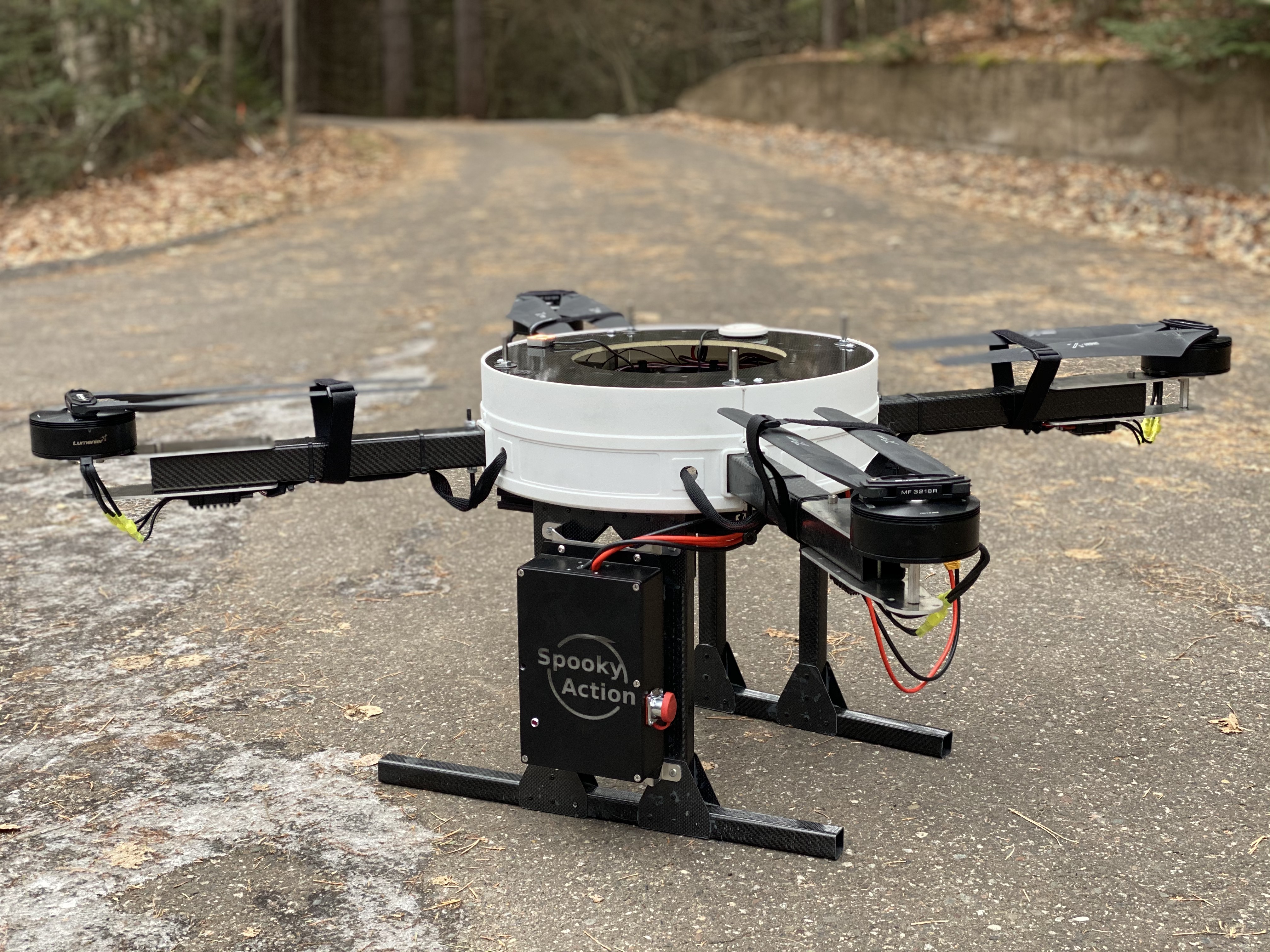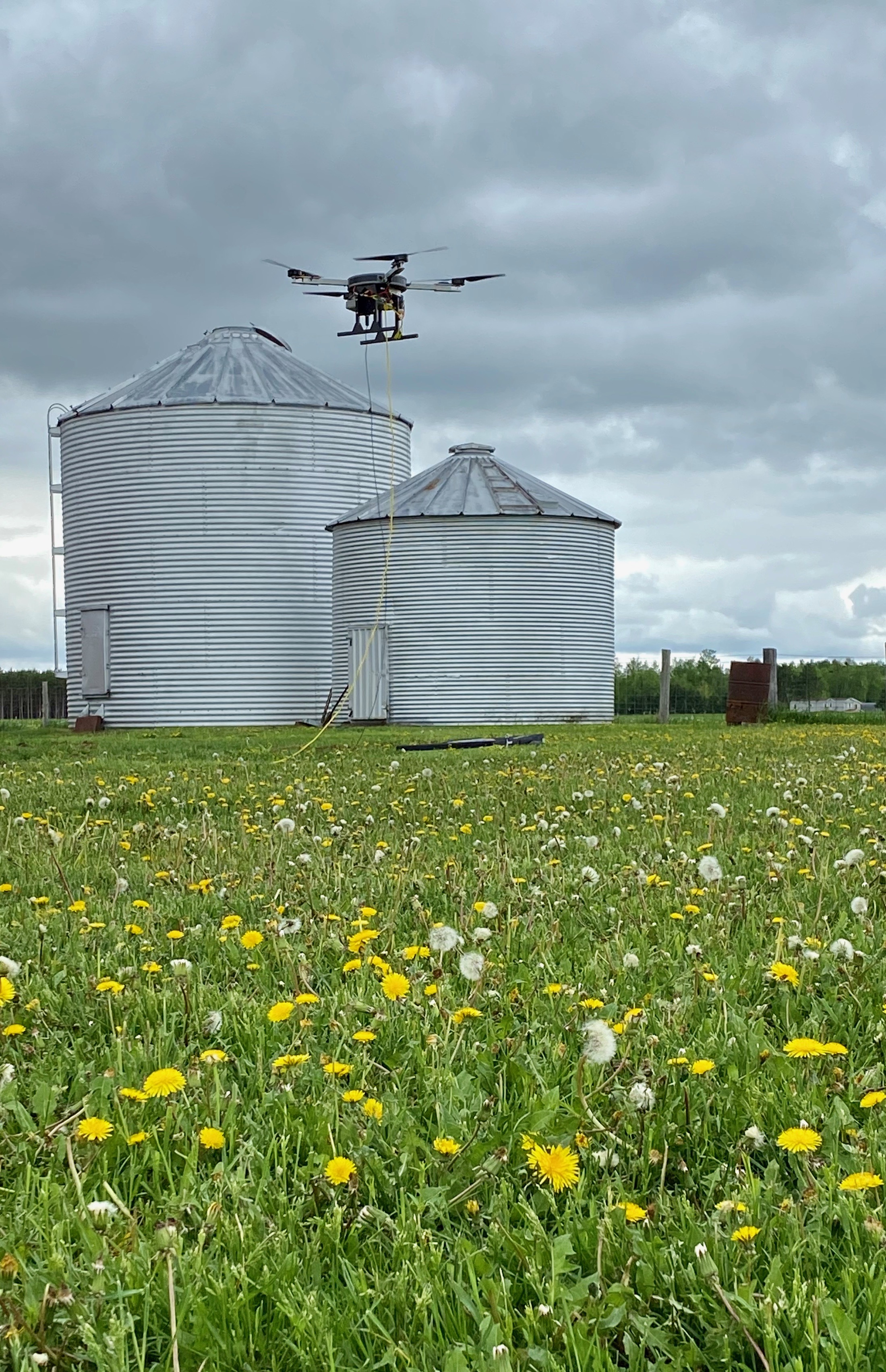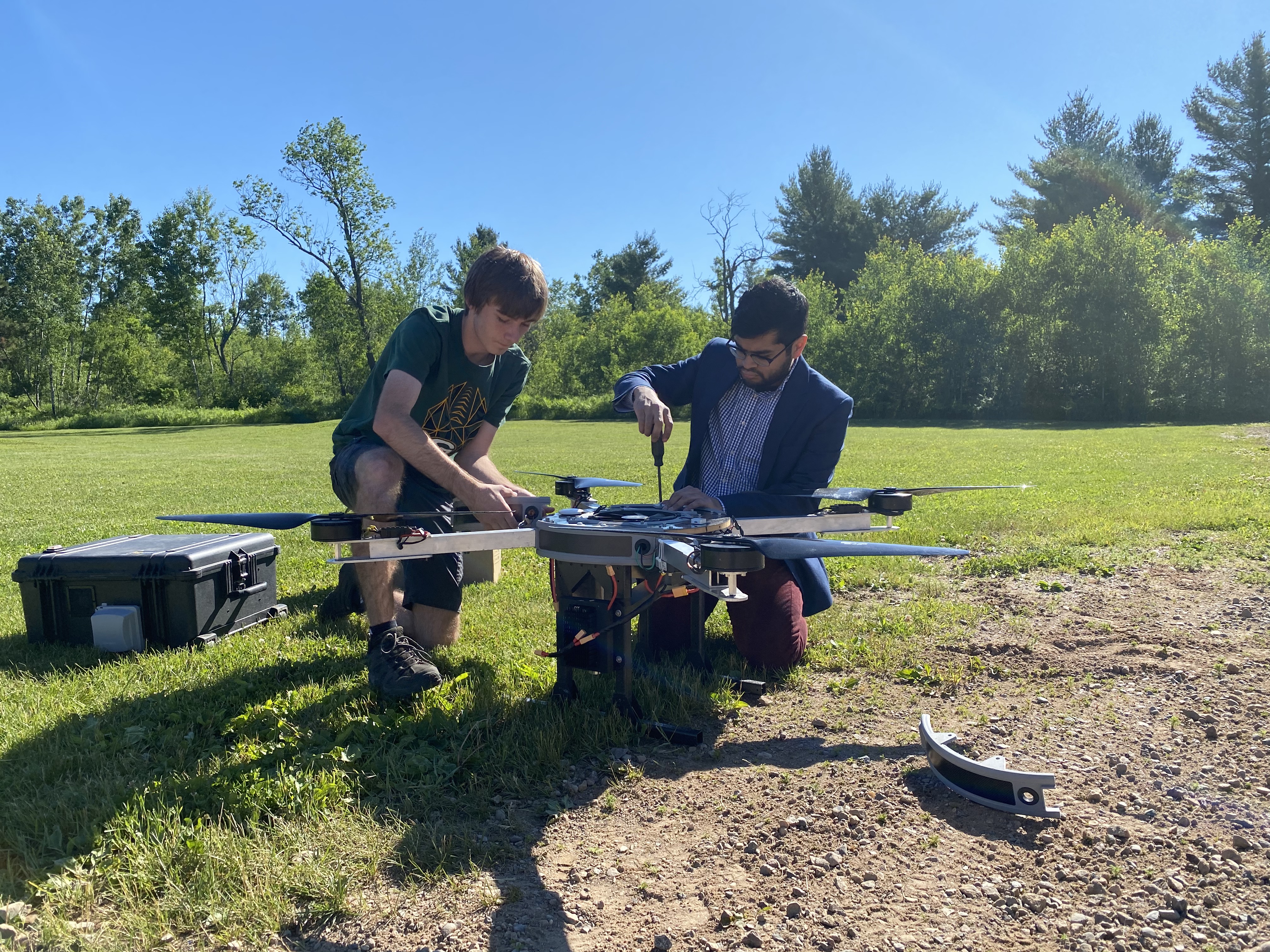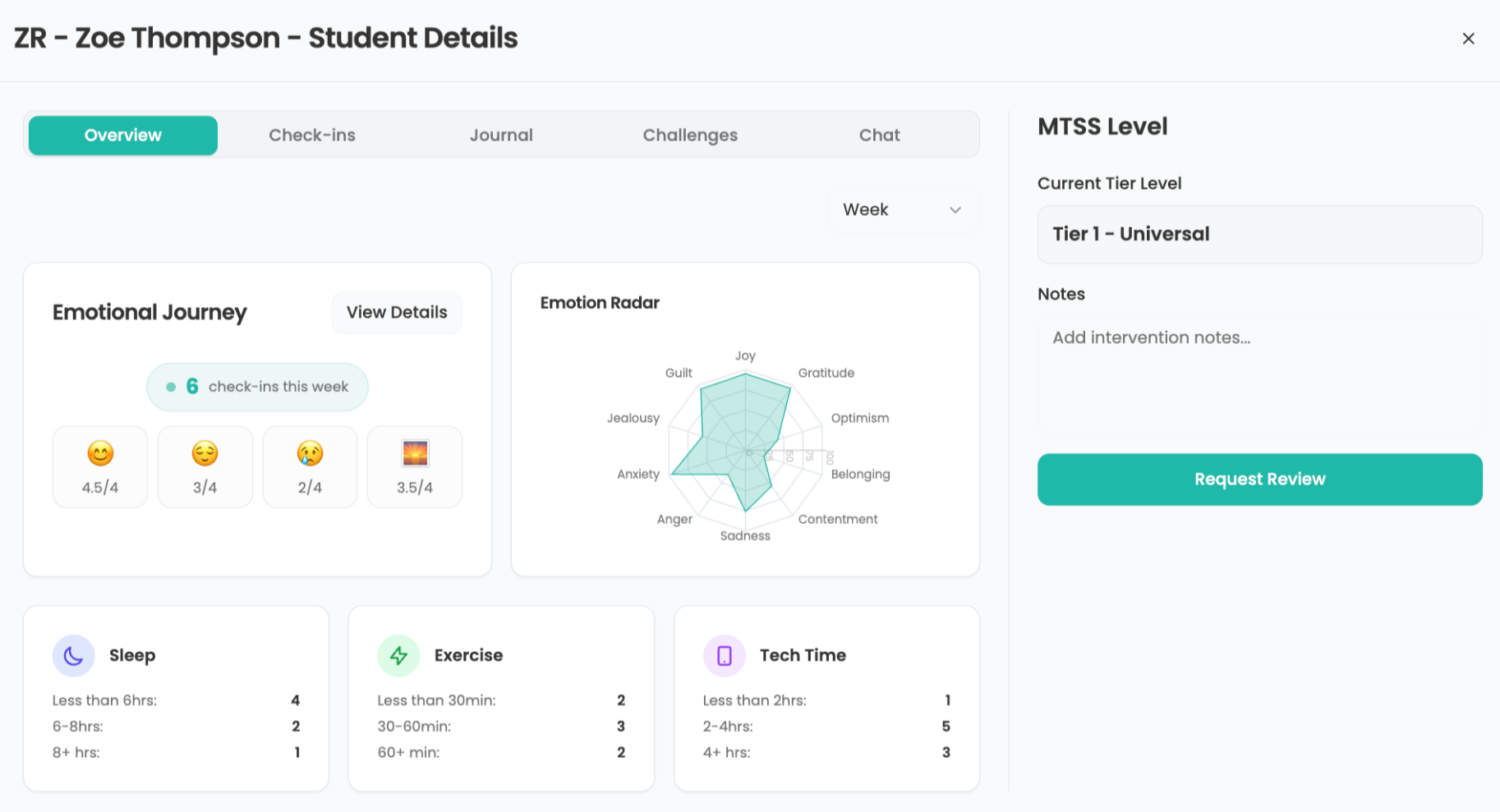How Schools Use Drones to Deliver Internet to Students
A school district in Wisconsin has launched a pilot program to explore delivering internet to students via drone

Officials at Northland Pines School District in northern Wisconsin are working with a tech company and local entrepreneur on a pilot program to deliver internet to students via drone.
The program, which received a $100,000 grant from the state of Wisconsin, will utilize drones that are tethered to a power source on the ground and can stay airborne for weeks, and even months. The drones will serve as flying cell towers, able to beam internet down to rural students who live in areas without high-speed internet access.
“We’ll be testing it over the next few months,” says Harlan Leusink, director of technology for the district.
About 10 percent of Northland Pines students don’t have any internet connectivity at home, while as many as 40 percent have inadequate connection speeds to meet the demands of remote learning. District leaders have tried for more than a decade to close that gap, but there are no easy solutions. “We’re a district of about 500 square miles and getting wired internet connection to those households that are at the end of that 500 square miles is a challenge,” Leusink says. In many cases, it isn’t feasible at all.
Since the pandemic began, school districts have gone to extensive lengths to close the digital divide, in some cases even becoming internet service providers, but Northland Pines School District is one of the first to take to the skies to try to solve this problem

The Tech
The district is working with the drone companies Spooky Action and Wisconsin Telelift, which was founded by local entrepreneurs Scott and Greta Williams.
Several years ago, Scott Williams developed the tethered drone technology while working with a nonprofit in Africa. It was conceived as a way of monitoring huge game preserves and preventing poaching. Rahul Tiwari, Spooky Action’s founder and CEO, worked with Williams in Africa and used the drone technology developed there to launch his company.
Tools and ideas to transform education. Sign up below.
Spooky Action drones are attached to a wire that transfers data to the drone as well as electricity. The tether is 400 feet, but usually the drone is not flying nearly that high. “What we find is for most radios, the sweet spot is about 100 feet,” Williams says. “Once you go above 100 feet, it starts to dissipate. Anything above 200 feet creates a little bit more complicated issues with the FAA for airspace, so we definitely want to stay under that.”
The drones also offer flexibility that isn’t available with permanent structures. “One of the neat things about this technology is you can put it at 100 feet and go, ‘Well, we're not getting great coverage there, let's go to 120 or go down to 80,’” says Williams. “So you can kind of vary it based on terrain.”
Spooky Action’s drones were originally designed to provide access during events and as part of disaster relief efforts. “A hurricane comes in and blows down all your cell towers, it's pretty easy to put up a flying cell tower,” Tiwari says. “It's not necessarily to replace a cell tower, we're not going to be able to do that. The idea is to dynamically address the internet needs of a community without having to build a million cell towers everywhere.”
While Spooky Action drones are capable of staying in the air for more than a month, that’s not usually necessary when providing internet to students. Tiwari envisions a scenario where the drones will be active during peak class and homework times, and maybe won’t be flying overnight.
Leusink says his district is looking at the drone service as a proof-of-concept for where and how they need to deploy more permanent equipment. If a drone in a certain area gives students good coverage in that area, he says the next step will be for the district to look for more permanent land-based solutions.

The Cost
Emmett J. McBride, director of technology for The D.C. Everest Area School District in Wisconsin, started looking into providing internet via drone independently of the Northland Pines project. Though a mostly suburban district, McBride’s district serves many students who live in remote wooded areas where cable is unavailable and cell service is frequently nonexistent.
Getting reliable internet to these students remains a challenge despite the district’s best efforts, says McBride. Wireless hotspots didn’t work well and satellite internet connections were plagued by latency (lag time). They explored building their own cell towers, but the cost was astronomical.
“We realized the couple towers we wanted to put up were going to cost close to a quarter of a million dollars and they were going to cover like 10 houses,” McBride says. “Can you imagine telling your taxpayers, ‘We spent a quarter of a million dollars and 10 people got internet, and it's okay internet, it's not even great.’”
McBride read about Google’s efforts with Project Loon, which was an initiative aimed at beaming high-speed internet to parts of the globe where it is unavailable with a fleet of high-altitude balloons. Google’s parent company announced in January Loon was ending, but last year McBride was inspired enough by the idea to begin exploring the possibility of his district doing something similar, albeit on a much smaller scale. He ultimately connected with the Northland Pines School District.
Though drones are only one of several possible solutions McBride’s district is looking at, he likes the idea of delivering internet access via drone. “It's like a cheap tower,” he says. “We have a tree cover canopy of about 100 feet, so you have to build a big tower, and it's expensive.” But with a drone it's easy to fly above and around any obstacles.
What Your District Should Know
McBride advises connecting with others in the education community through organizations such as Digital Promise and to connect with local, county and state organizations about potential resources.
Tiwari recommends reaching out to companies such as his so developers can better tailor their products to addressing the real-world problems occurring within districts. He notes that the challenge of providing universal internet is so complex, there is no one-size fits all solution. “The magnitude of the problem is so big that they're going to need technology like ours and technology like other folks have, all working in tandem to try to close this gap.”
Erik Ofgang is a Tech & Learning contributor. A journalist, author and educator, his work has appeared in The New York Times, the Washington Post, the Smithsonian, The Atlantic, and Associated Press. He currently teaches at Western Connecticut State University’s MFA program. While a staff writer at Connecticut Magazine he won a Society of Professional Journalism Award for his education reporting. He is interested in how humans learn and how technology can make that more effective.

